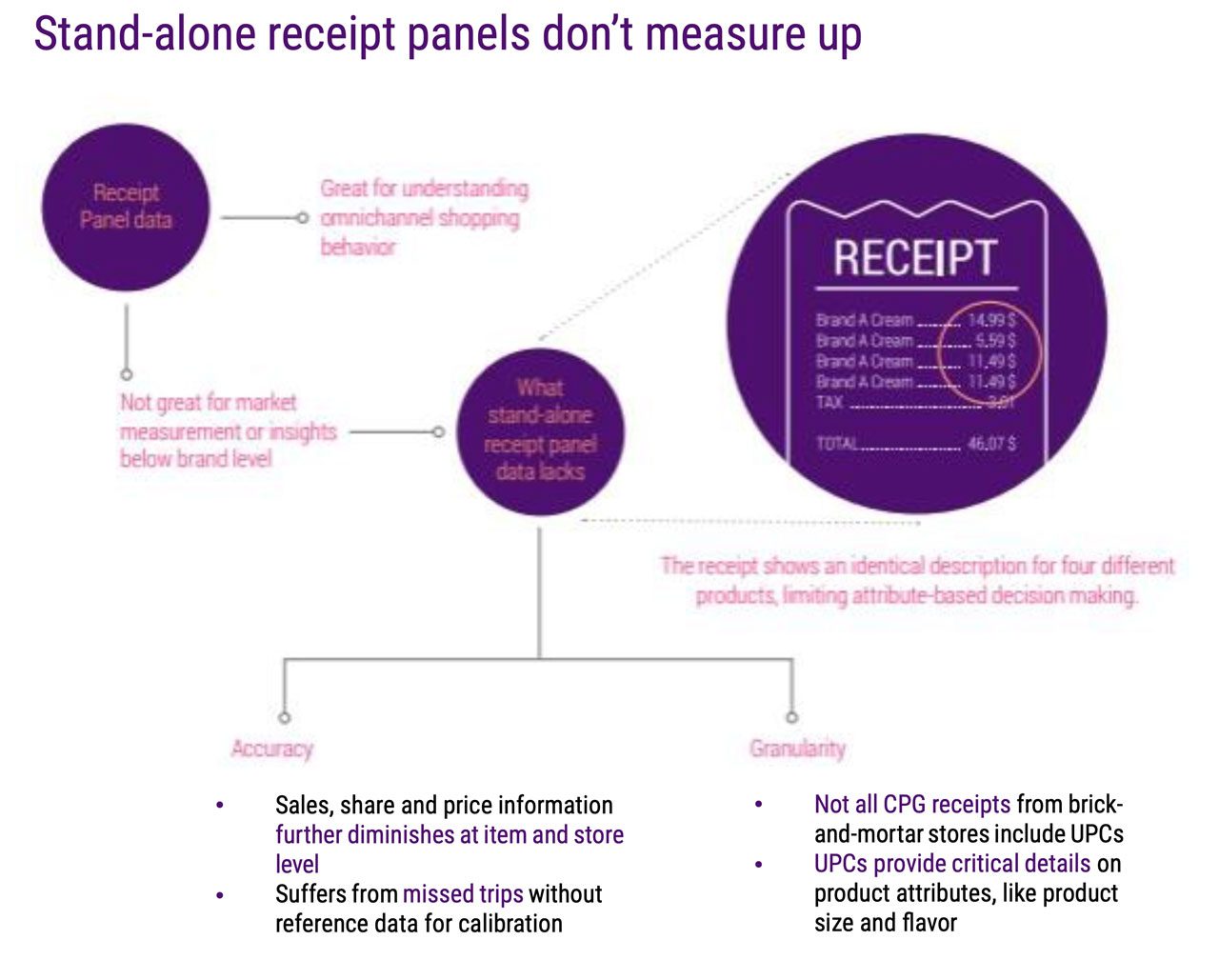Michelle Bennett
Michelle.bennett@circana.com
Why stand-alone receipt panels don’t measure up
Getting the most from your receipt panel data
Receipt panels play an important role in omnichannel understanding
Because they are designed to capture consumer purchases across all channels, receipt panels are great for insights into things like consumer channel shifting. They can also provide valuable supplemental market measurement coverage for the small subset of retailers and channels that are hard to cover using point-of-sale data.
Unfortunately, some providers may misleadingly position their stand-alone receipt panels as a comprehensive solution for all your consumer insight and market measurement needs. But while coverage is important, you also require accuracy and granularity to obtain the insights you need to understand and run your business. Stand-alone receipt panels are simply not equipped to deliver the results you need in two key areas:
Receipt panels are not accurate enough to stand alone
Even the largest receipt panels mostly only include purchases make by a small fraction of the overall population. When it comes to understanding your sales and share, no receipt panel can come close to delivering the accuracy that census point-of-sale data offers. By capturing every transaction that crosses a retailer’s checkouts, point-of-sale data delivers the most accurate measurement of sales, share and price down to the UPC or store level.
Panelists are human, and they neglect to scan some purchases. These missed trips can compromise the integrity of both sales and consumer measures. Without an external source of truth, such as POS data, it is difficult to measure and correct for these missed trips. Stand-alone panel providers do not have access to many of these external reference data sets. As a result, the numbers they report often do not reflect the marketplace accurately.
The data from receipts is not granular enough
Another problem with receipts is that they often contain only terse descriptions that do not allow you to identify exactly what item is purchased. In fact, less than half of CPG brick-and-mortar receipts include a UPC code. For all other receipts, it is necessary to infer what product was purchased based on limited descriptions. This often means that you can only identify the brand or sometimes only the category. With receipt data alone, you cannot get visibility into product performance based on key attributes such as flavor, scent, pack size and organic certification.
Without the item-level detail, you lose the granular information you need to address key business problems. For example, you can’t fight delisting of your SKUs at a retailer if you can’t accurately measure which pack sizes or flavors are most important to a retailer’s shoppers. You can’t identify new flavor or health and wellness trends if you don’t see this level of product detail. And you shouldn’t rely on data with such limited product detail as the source for all your business planning.

See how Circana’s approach to receipt panels is different
Stand-alone receipt panels are an unnecessary compromise that no one should make today given the omnichannel solutions that brands and retailers have at their disposal.
Combining receipt panel with other data sources like POS, scan and loyalty panels provides the breadth, accuracy and granularity you need to optimize decision making.
Get insights straight to your inbox





